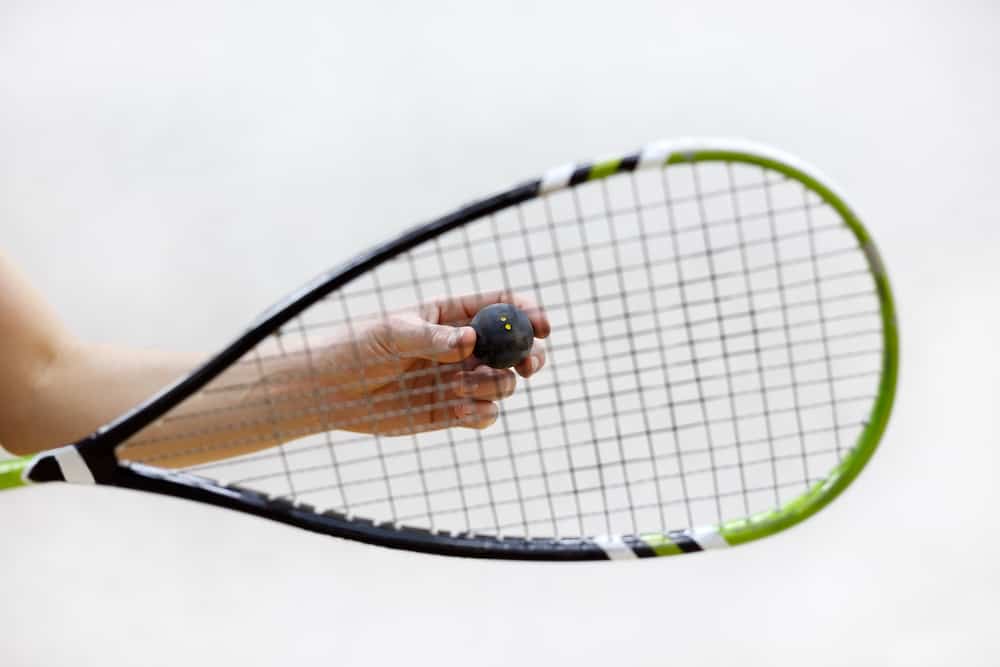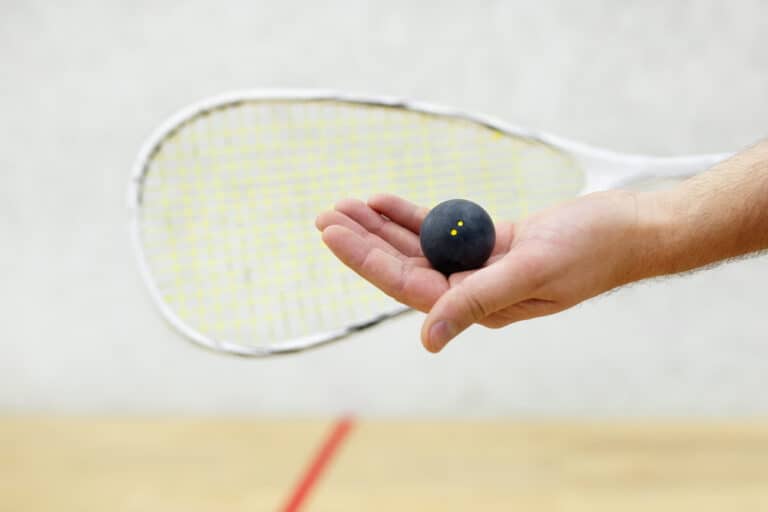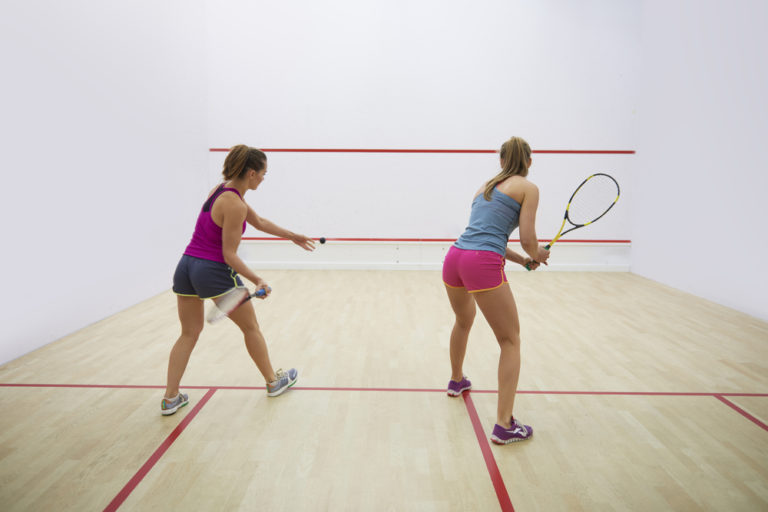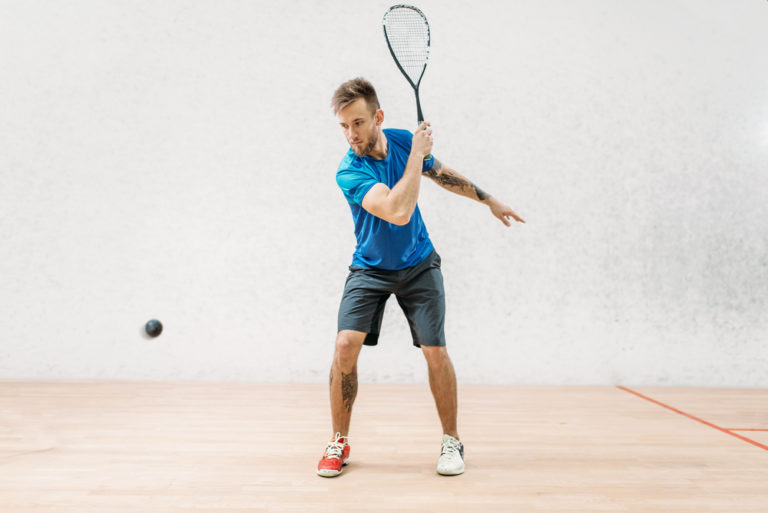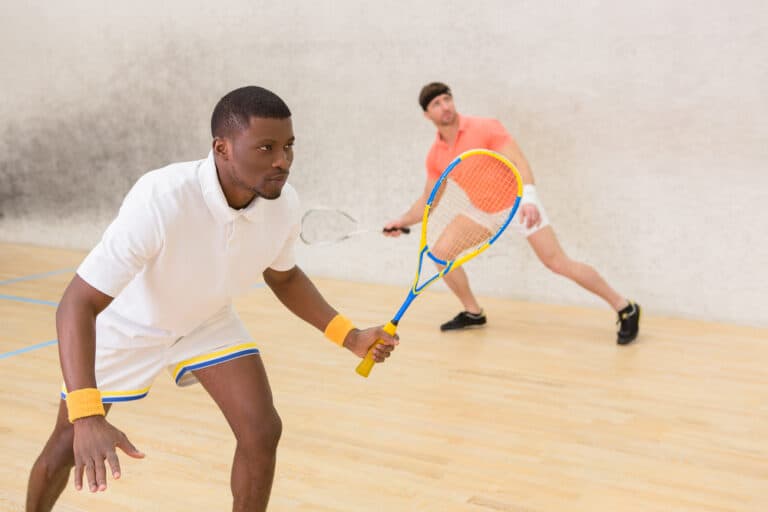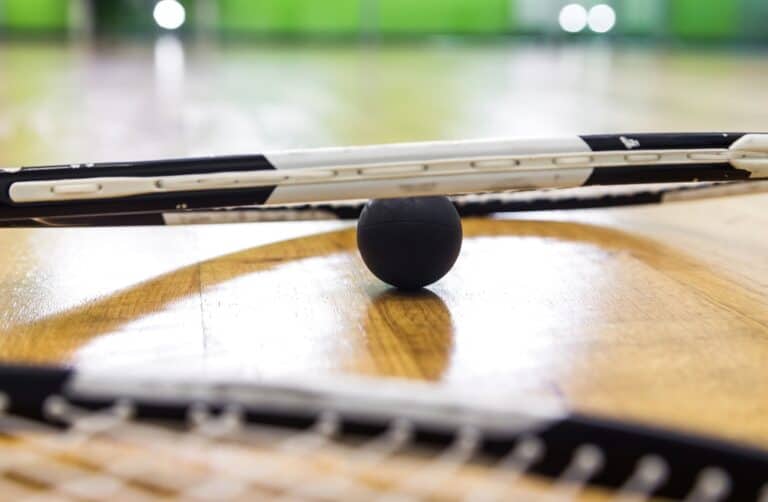What Is Hardball Squash?
Hardball squash is an incomparably beautiful game, with its swinging of the racket and the holding of a rhythm that only the players genuinely understand while they are in the enclosed hardball squash court. But what exactly is hardball squash?
Hardball Squash is played on a smaller court than softball squash. It is played with a much harder rubber ball that is bouncier and spins more responsively. Hardball squash was preferred in America instead of softball squash, which was played in the British or International versions of squash.
Hardball is a hard one to get down. Either you like the adrenaline and get a rush out of being hit by a hardball, or you don’t. Either way, this game definitely has its place in recreational fun, with its fast-paced rallies and strong determination required from players. There are certainly some good values that you can learn from playing hardball squash.
What Is Hardball Squash?
Hardball has been played in North America since the late 19th and early 20th centuries, and it is still played to this day. Hardball squash can be played as singles or doubles games. However, the doubles game is much more popular to play than singles matches.
The game itself is played on a smaller squash court than what you would find if you played softball squash. However, this is only true if you were to play a singles one-on-one match of hardball squash. Playing a doubles match requires a court with bigger dimensions since you now have four players moving around the court instead of just two.
The dimensions of a hardball squash court for a singles one-on-one game are 18 ½ feet, and the tin, which is at the bottom of the front wall, is 17 inches high. This is quite a bit smaller than the court required for British softball squash, which is played on a 21-foot court with a 19-inch high tin.
As mentioned, the singles and doubles court dimensions differ as well. The measurements for a doubles match of hardball squash are 45 feet long (more than double that of a standard softball court) and 25 feet wide, and the tin is the same size as the singles court tin, which is 17 inches high.
The Strategy Of Hardball Squash
You should definitely have a strategy when you play the fast-paced game of hardball squash. For one, players would like to stay out of the way of the harder ball so as not to get hit by it. But it’s called hardball squash for a reason, so sometimes players should just take a deep breath and be a bit harder themselves.
Hardball players must have a lot of determination when going into the small enclosed space of the squash court. With each rally being super-fast, players must be effective in their strategy of exhausting the other player with their power shots. Making opponents run around on the court while the ball is only allowed to bounce once takes a lot of expert control and determination.
There is no real science that you can implement that will create a particular set outcome. The game will be different for each individual. Just stay true to the game; be determined to win the match without losing control. Be a smart player and calculate every hit you make.
How Do You Play Hardball Squash?
Hardball singles and doubles matches are played slightly differently but with the same goal, either way, which is to win by scoring the most points. The game is played up to fifteen points, and whoever wins three games wins the match.
When the ball is served, the players take turns hitting the ball against any of the following areas:
- The front wall.
- Above the tin.
- Below the outline.
- The ball may also hit the side or back walls, but only if the ball hits below the outline or above the tin as well.
The ball should only bounce once before a player must strike it, and players are allowed to move anywhere on the court. Hardball is known for its rhythm; good hardball players soon establish a rhythm of shots that set the game’s tone. Let the ball guide you in your journey towards finding your rhythm if you’re playing hardball.
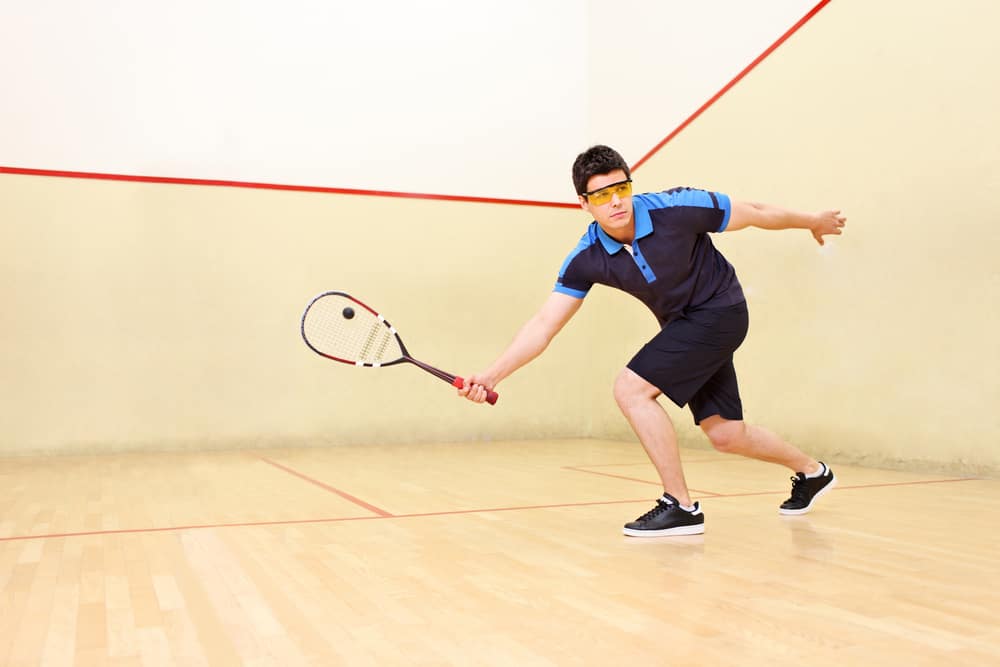
Hardball Squash In Its Early Days
In the early days, squash was played in Britain, more or less as we know it today. Canada was the first other country to take notice of squash. However, they soon found that their weather conditions were not as well-suited to the traditional form of squash, now known as softball, and this is how hardball squash was born.
Soon, the popularity of this new sport found its way across to the United States and even to Mexico. With this rise in popularity, a new sport was developed with a set of rules that were utterly its own, separate from the international form of softball squash.
The standard rules were finalized in the late 1920s, and now anyone and everyone could learn this fantastic, fast-paced, beautiful game of moving around with a racket in their hand. From this time onwards, hardball squash courts were built all around America at recreational centers, sports clubs, and colleges.
Hardball squash was very popular right from its early days, and very soon, regular tournaments were being played from 1907 up until 1975. Here we can see a slow decline in the popularity of hardball squash. Softball squash then found its way into America, and soon new courts were built to accommodate this International version of squash.
The decline of hardball squash started in the summer months when players realized that it was easier to play softball, which is easier to handle when the weather conditions are hotter. They didn’t get so exhausted from the fast-paced hardball games.
In the summer months, players would rather play softball, which has longer and slower rallies, and after the summer months, it was harder to switch back to hardball squash.
Hardball squash courts were everywhere but mostly forgotten and no longer used for recreational purposes. Hardball squash is now becoming more popular again and enjoyed by many, especially as a doubles game. There are still some single tournaments, but they are few and far between.
Conclusion
Is it at all possible to bring life back into these abandoned and forgotten hardball squash courts? Or will they forever be just a tiny part of America’s early squash history? You can challenge yourself to play this game by pushing your body in ways you didn’t think possible. Maybe, if enough people try, we can bring back the glory and adrenaline of good old hardball squash.
References
- https://ussquash.org/wp-content/uploads/2020/05/HARDBALL-SINGLES-PLAYING-RULES.pdf
- https://www.ussquash.com/wp-content/uploads/2012/06/131023_Hardball-Doubles-Rules-2014.pdf
- https://www.youtube.com/watch?v=_TT2OqqDoH0
- https://www.nytimes.com/1990/02/12/sports/on-your-own-softball-edging-hardball-among-squash-partisans.html
- https://www.reddit.com/r/squash/comments/fj3hc/hardball_as_opposed_to_softball_for_those_of_us/
- https://www.quora.com/Which-is-harder-squash-or-racquetball
- https://www.britannica.com/sports/hardball-squash-rackets

